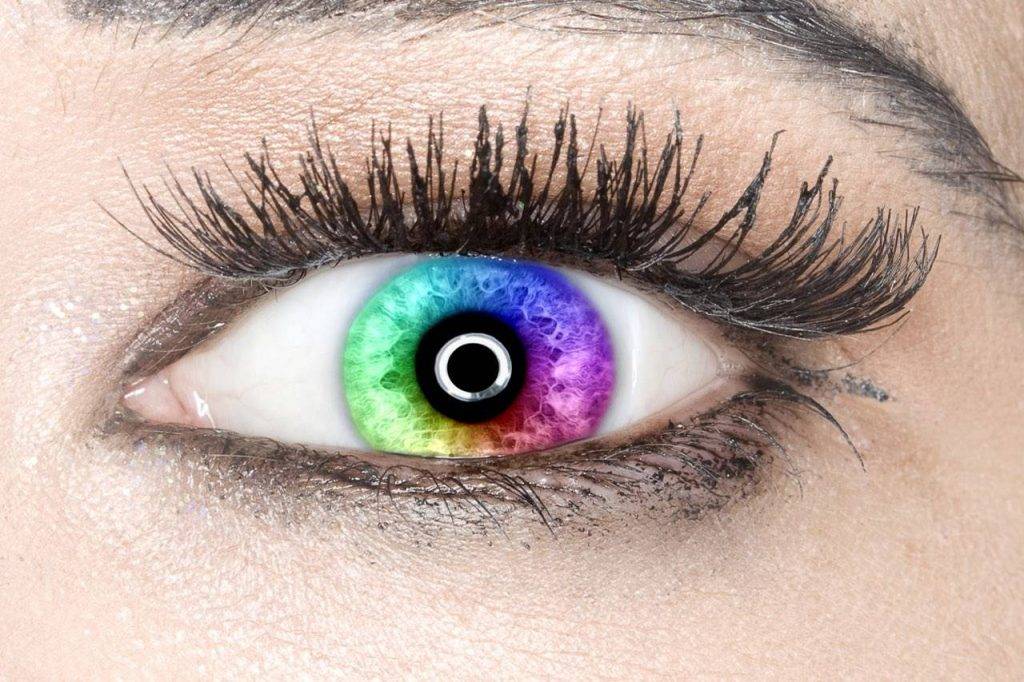Up to 10 percent of the male population has some degree of abnormal color vision.
Color blindness is not the correct term when describing most people whose color perceptions are abnormal or unusual.
Color vision deficiencies (CVD) can range from a slight inability to distinguish between shades of the same color – which is rather frequent – to a complete inability to perceive any color, which is extremely rare.
The most common type of color-vision loss is red-green deficiency, where people, mainly men, see both dark green and dark red as brown.
What causes CVD?
Color vision deficiencies are either inherited or acquired.
The majority of cases are hereditary; however retinal or optic nerve pathologies such as multiple sclerosis and diabetes can also cause color abnormalities.
CVDs that are inherited affect both eyes, whereas CVDs that are acquired usually affect only one eye, depending on the underlying cause.
In a normal eye, rods and cones are neuron cells found in the retina. In low-light situations, rods are critical for perceiving light, motion, and detecting brightness and contrast.
The cones let us identify and distinguish colors as well as minute features such as a sewing needle or reading material.
Any hereditary or acquired deficiency in the cones will cause a color vision loss.
Inherited color vision deficiencies
When, to some degree, CVD is hereditary, one of the three types of cones is either not functional or missing.
Although there is some overlap, there are two main types of hereditary CVDs: difficulty distinguishing reds from greens, and difficulty distinguishing blues from yellows.
The red-green kind of CVD is significantly more frequent than the blue-yellow type.
Cones normally register different colors and carry that information back to the brain via the optic nerve, but if one or more types of cones are missing, seeing that primary color will be difficult or impossible.
The most common type of genetic CVD is red-green deficiency, where people, mainly men, see dark green and dark red as brown.
Rather, it means that they may have trouble distinguishing between shades of them. In many cases, whether or not they can see them depends on how bright or dark they are. For example, a green field can appear brown or dark red.
Blue-yellow CVD is a rare type of CVD. This type of CVD is not only rarer, but also more severe, because patients with it frequently have some red-green deficiency as well. It’s possible that a person has a color vision problem and is completely unaware of it.
People with a red-green deficiency, for example, learn to identify the color of leaves as green.
If you suspect you have some form of CVD, contact an eye doctor near you.
SEE RELATED: Tinted Lenses for Color Blindness
Acquired color vision deficiencies
There are many causes for acquired color vision deficiency. Among them are:
- Alzheimer’s disease
- Chronic alcoholism
- Diabetes
- Glaucoma
- Leukemia
- Macular degeneration
- Multiple sclerosis
- Parkinson’s disease
- Sickle cell anemia
Furthermore, some medications, such as those used to treat heart problems, high blood pressure, infections, and psychological issues, might cause color vision distortion.
The medicine used to treat malaria is well known for causing color abnormalities.
Importance of an eye exam
It’s important to undergo a comprehensive eye exam before the age of three since many teaching materials rely heavily on color perception or color coding, and can negatively affect learning.
LEARN MORE: Vision Therapy for Children
Schedule an eye exam with an eye doctor near you to find out if you or your child have color vision deficiency.
Early diagnosis of CVD can spare a child from any frustration they may feel as the result of not being able to see differences in colors that others can see.

